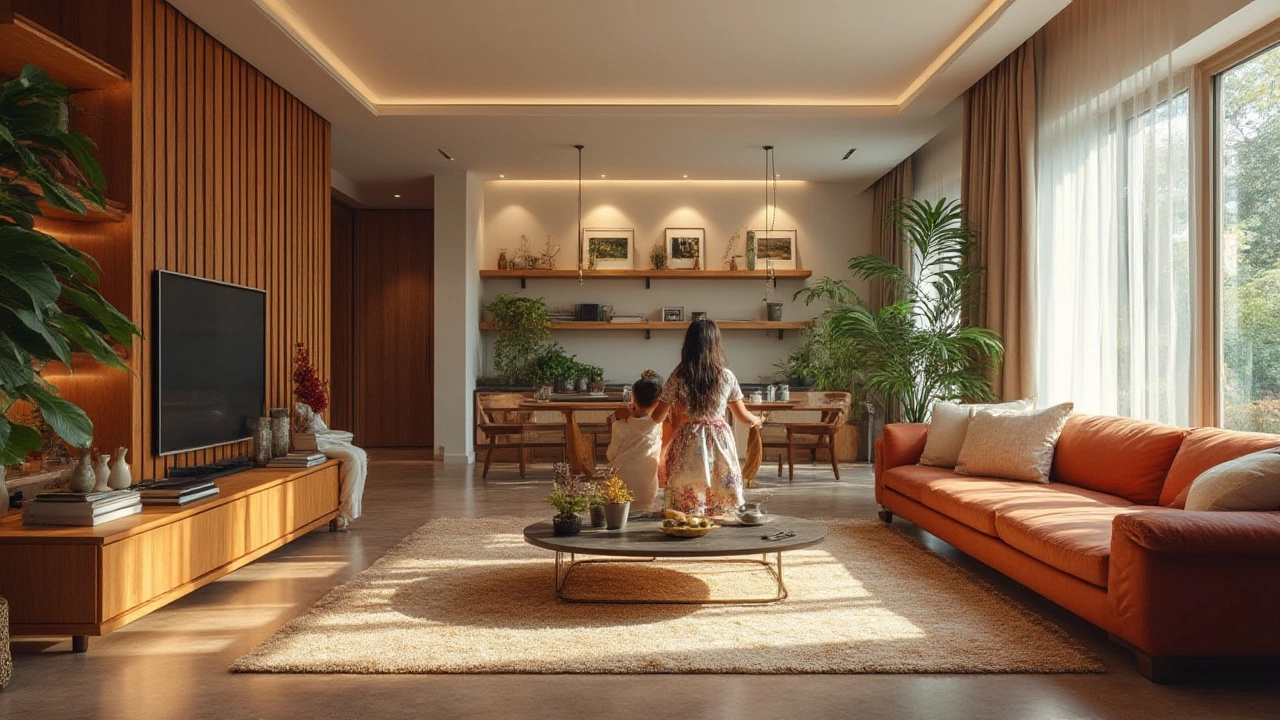Contemporary Interior Design: Fresh Ideas for Modern Living
When working with contemporary interior, a design approach that mixes current trends, functional layouts, and eco‑friendly choices. Also known as modern interior design, it blends clean lines with thoughtful material choices. Another core concept is minimalist style, a philosophy that strips away excess to focus on space and simplicity, while sustainable materials, renewable or low‑impact resources such as bamboo, reclaimed wood, and low‑VOC paints give the space a greener footprint. Finally, the color palette, a curated mix of neutral tones and bold accents that sets the mood ties everything together, making the room feel both fresh and timeless. Contemporary interior design thus requires a balance of aesthetics, function, and sustainability.
Key Elements of a Contemporary Interior
First up, open space. Contemporary interiors love room to breathe, so walls stay clear and furniture stays low‑profile. This open feel works well with the 3x4 kitchen rule you’ll find in our guide on kitchen ergonomics – a tidy layout keeps traffic flowing and cooking easy. Pair that with strategic lighting, and you’ve got a space that feels both airy and purposeful.
Second, material choices matter. Swap out heavy, glossy finishes for matte surfaces, natural wood, or recycled metal. Our article on “Best Floor Colors That Match Any Decor” shows how neutral flooring can anchor a room without stealing the spotlight. When you pair a neutral floor with a bold accent wall, you get that classic contemporary contrast.
Third, color is a mood‑setter. In a contemporary interior, you’ll often see a base of soft whites, greys, or beiges, then a pop of color—think deep navy, forest green, or warm mustard. The “Best Curtain Colors to Make Any Room Feel Cozy” post explains how a single fabric change can shift the entire vibe, perfect for adding that pop without a full redo.
Fourth, minimalist décor keeps clutter at bay. Think sleek storage solutions, built‑in shelving, and multi‑functional furniture. Our guide on “How to Organize Your Living Room” provides real‑world layouts that fit the contemporary ethos: everything has a place, and everything looks intentional.
Fifth, tech integration is subtle but essential. Smart lighting, hidden charging stations, and energy‑efficient appliances fit right into the clean lines of a contemporary space. The “Is Building a House Cheaper Than Buying?” article touches on how integrating energy‑saving tech early can lower long‑term costs—a smart move for any modern home.
All these pieces connect: open layouts need the right lighting, which relies on sustainable fixtures; minimal décor complements the color palette, which is enhanced by thoughtful material choices. That’s why we say contemporary interior design encompasses minimalist style, requires sustainable materials, and influences color decisions.
When you’re ready to add a luxe feel without breaking the bank, check out the “Bougie Home Decor Ideas” post. It shows how metal accents, mirrored surfaces, and strategic art placement can elevate a room’s perceived value—exactly the kind of upgrade that meshes with contemporary ideals.
For those focused on rooms that serve multiple purposes, the “How to Spruce Up an Old Living Room” guide offers budget‑friendly tweaks that keep the contemporary feel alive, like swapping out dated sofas for modular pieces and adding a statement rug that ties the color palette together.
If you’re planning a full‑scale remodel, the “Modern Bathroom Renovation” article walks you through updating fixtures, tile choices, and storage solutions that keep the bathroom in line with contemporary design. It’s a perfect example of applying the same principles—clean lines, sustainable choices, bold accents—to a smaller space.
Finally, don’t forget the importance of a well‑written brief. Our “Architectural Services Brief” piece explains how a clear brief can ensure your designer captures the contemporary vibe you want, from layout to material specs.
All these resources together give you a toolbox for creating a contemporary interior that feels fresh, functional, and future‑ready. Below you’ll find the detailed articles that dive deeper into each topic, offering step‑by‑step advice, real‑world examples, and expert tips you can apply right away.
